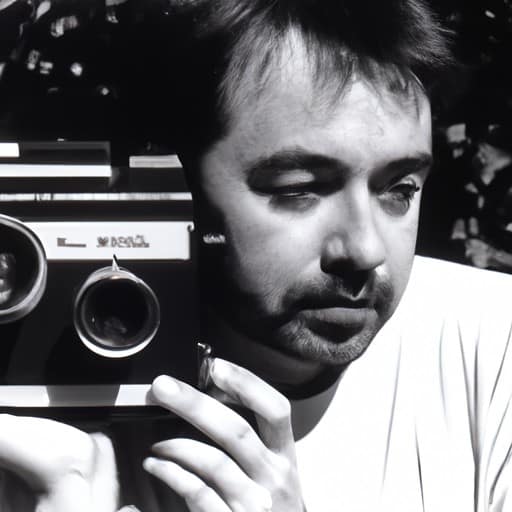This blogpost explores the cinematic universe of Luc Besson, a renowned French film director, writer, and producer. His distinct style and storytelling ability, combined with a unique perspective on action, science fiction, and drama genres, have made him a significant figure in the global film industry. We delve into his most acclaimed works, his directing style, and his impact on cinema.
1. ‘The Extraordinary World of Luc Besson: How It All Began?’
Luc Besson, a renowned French filmmaker, has created a unique and captivating world through his movies. With a career spanning several decades, Besson has established himself as a visionary director, writer, and producer. This paragraph will explore the early beginnings of Luc Besson’s career, his influences, and the factors that contributed to his success.
Besson’s passion for cinema began at a young age. Growing up in a suburb of Paris, he was enamored by the magic of movies and spent countless hours watching and analyzing films. His early exposure to the works of directors like Jean-Luc Godard and Federico Fellini greatly influenced his artistic sensibilities and storytelling techniques.
In 1983, Besson made his directorial debut with the film “Le Dernier Combat” (The Last Battle). This post-apocalyptic movie, set in a dystopian future, showcased Besson’s distinctive visual style and his ability to create immersive and atmospheric worlds. Despite being a low-budget production, the film received critical acclaim and marked the beginning of Besson’s remarkable career.
Furthermore, Besson’s unique blend of genres and his ability to push boundaries have set him apart in the film industry. From action-packed thrillers like “Nikita” and “Léon: The Professional” to visually stunning science fiction epics like “The Fifth Element,” Besson has proven his versatility and his willingness to take risks. His films often feature strong female protagonists, intricate plotlines, and breathtaking cinematography, all of which have become hallmarks of his work.

1. A young Luc Besson with his first film camera, marking the beginning of his illustrious career.
2. ‘The Fifth Element: A Masterpiece or a Misstep?’
Released in 1997, “The Fifth Element” is a science fiction film directed by Luc Besson that has garnered both praise and criticism. Set in a futuristic world, the film follows the journey of Korben Dallas, played by Bruce Willis, as he tries to save the Earth from destruction. While some consider it to be a masterpiece of visual storytelling and imaginative world-building, others argue that it falls short in terms of character development and narrative coherence.
One of the standout aspects of “The Fifth Element” is its stunning visual design. Besson’s attention to detail is evident throughout the film, with vibrant and intricate set designs, costumes, and special effects. The futuristic cityscape, the alien creatures, and the iconic multipass are all visually striking elements that contribute to the film’s immersive experience. Moreover, the use of color and lighting creates a unique atmosphere that adds to the film’s overall aesthetic appeal.
However, despite its visual brilliance, the film has faced criticism for its narrative structure and character development. Some argue that the plot is convoluted and lacks coherence, making it difficult to fully grasp the motivations and actions of the characters. Additionally, while the chemistry between the cast members is commendable, some feel that the characters themselves lack depth and fail to evolve throughout the story.
Nevertheless, “The Fifth Element” has undeniably left a lasting impact on popular culture. Its distinct blend of action, humor, and science fiction has garnered a dedicated fanbase over the years. The film’s unique style and memorable moments, such as the opera scene and the iconic Leeloo character portrayed by Milla Jovovich, continue to resonate with audiences and contribute to its cult status.
3. ‘Luc Besson’s Portrayal of Heroines: Empowering or Stereotypical?’
Luc Besson’s films have often featured strong female protagonists, but the portrayal of these characters has sparked debates about whether they are truly empowering or merely reinforcing stereotypes. One of the notable examples is Leeloo, the iconic character from “The Fifth Element,” played by Milla Jovovich. On one hand, Leeloo is a physically powerful and independent character, showcasing her abilities in combat and her determination to save the world. Additionally, her vulnerability and emotional depth add complexity to her character. However, critics argue that her sexualized appearance and the emphasis on her physical beauty overshadow her other qualities, reducing her to a stereotypical “male fantasy.”
Another example of a female character in Besson’s films is Nikita from “La Femme Nikita.” Played by Anne Parillaud, Nikita is initially portrayed as a troubled and vulnerable drug addict but is transformed into a skilled and deadly assassin. While some argue that her transformation and agency throughout the film are empowering, others criticize the film for its objectification of Nikita through explicit scenes and the focus on her physical appearance.
It is important to acknowledge that Besson has also directed films that feature more nuanced and empowering portrayals of women, such as Mathilda from “Leon: The Professional” and Lucy from the film of the same name. These characters exhibit strength, intelligence, and resilience, challenging traditional gender roles and stereotypes. However, the debate surrounding Besson’s portrayal of heroines suggests that while he has made strides in presenting empowered female characters, there is still room for improvement in avoiding objectification and reducing the emphasis on physical beauty.
4. ‘What Impact has Luc Besson had on the Global Film Industry?’
Luc Besson’s impact on the global film industry cannot be overstated. He has made significant contributions as a director, writer, and producer, leaving an indelible mark on the industry. One of his most notable achievements is his ability to blend genres, creating unique and visually stunning films that captivate audiences worldwide. Besson’s distinct style, characterized by fast-paced action sequences, innovative storytelling, and striking visuals, has influenced countless filmmakers and has become synonymous with his name.
In addition to his artistic contributions, Besson has also had a profound impact on the commercial success of French cinema. His films, such as “La Femme Nikita,” “Leon: The Professional,” and “Lucy,” have achieved international acclaim and commercial success, paving the way for other French filmmakers to find success on a global scale. Besson’s ability to create films that appeal to both domestic and international audiences has helped elevate French cinema to new heights and has cemented his status as one of the most influential figures in the industry.
Furthermore, Besson’s production company, EuropaCorp, has played a significant role in shaping the landscape of European cinema. With a focus on producing high-concept, commercially viable films, EuropaCorp has helped bring European films to a wider audience, challenging the dominance of Hollywood in the global film market. Besson’s commitment to supporting and promoting European talent has opened doors for aspiring filmmakers and has contributed to the diversification and globalization of the film industry.
Luc Besson is undeniably one of the most influential figures in cinema, with a career spanning over four decades. His innovative storytelling, unique visuals, and his ability to combine action, drama, and science fiction in a single narrative have influenced a generation of filmmakers. Despite facing criticism and controversy, Besson’s cinematic universe continues to inspire and entertain audiences worldwide.

